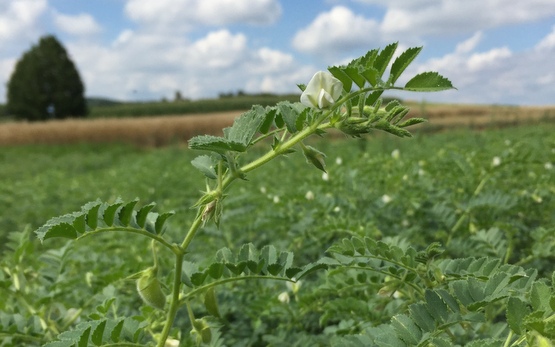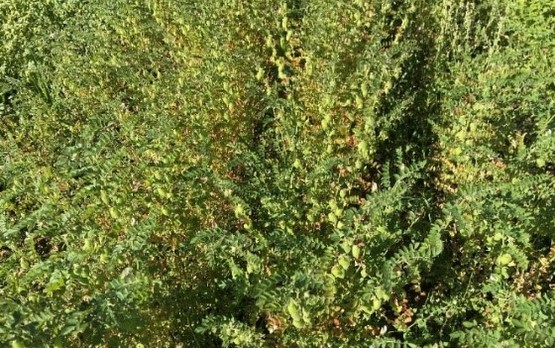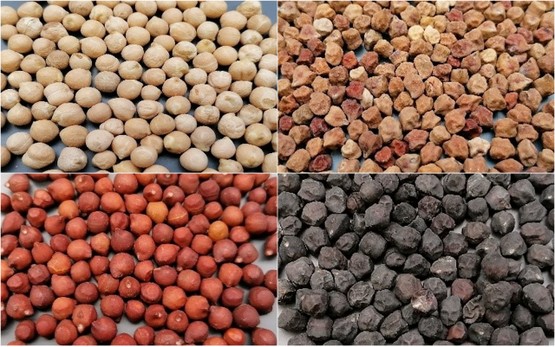
Origin and spread
A member of the legume family (Fabaceae), the chickpea (Cicer arietinum L.) was cultivated in Iran and Iraq as long ago as 8000 years BC. From there, it later spread to India and Asia. Today, chickpeas are the third-most important pulse in the world.
The main growing regions are in India, Australia, Myanmar, Ethiopia and Turkey. Depending on the region and variety grown, an average yield of 1 to 2 t/ha can be expected.
Nutritional importance
In the past, the changed dietary habits of much of the population of the industrial countries led to a steadily increasing demand for protein-rich crops. Because of their high protein content, chickpeas can be used as a meat substitute, and are thus especially popular with vegetarians. Since chickpeas contain no gluten, they are also of interest to people suffering of the coeliac disease.
Traits and cultivation-related challenges

Chickpeas are able to fix nitrogen from the air by symbiosis with rhizobia. Hence, they require no additional fertilisation with nitrogen. They can even provide nitrogen for the subsequent crop.
Owing to climate change, the chickpea’s drought-stress tolerance could be of benefit to European agriculture. Being frost-sensitive and requiring a warm and sunny climate, however, it is less adapted to central European site and climatic conditions. Similar to other leguminous crops, also chickpeas grow better if a break of 5 to 6 years between chickpeas or other legumes on the same field is applied. This rotation break is also an effective method for controlling ascochyta blight (Ascochyta) of chickpea. Moreover, chickpea crops are described in the literature to be sensitive to various pests like the pea aphid, pea moth and pea-leaf weevil.
Chickpeas have a weak competitive ability against weeds and ripen unevenly. The former requires the taking of appropriate measures during juvenile development, and the latter makes it challenging to determine the harvest date.
Small-Plot Trials
Since 2017, trials with different objectives have been conducted: variety trials (with and without inoculation with rhizobia), sowing density trials and seed treatment trials. The aim is to gain experience in chickpea cultivation in Switzerland and to estimate yield potential.
Preliminary results show that cultivation is generally possible in Switzerland, and that some varieties are better adapted than others.

Contact





